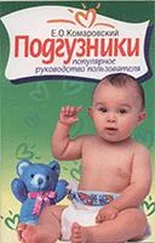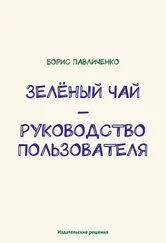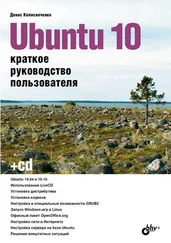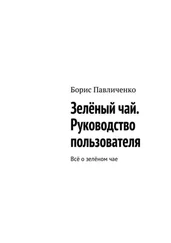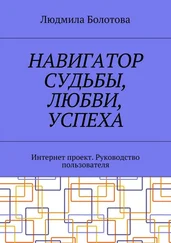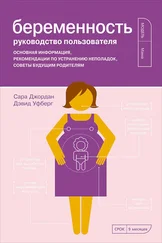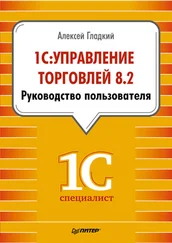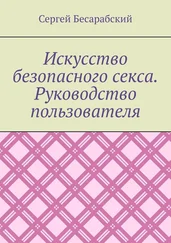M. J. Yaffe and J. G. Mainprize, “Risk of Radiation-Induced Breast Cancer from Mammographic Screening 1,” Radiology 258, no. 1 (2011): 98–105.
L. M. Warren, D. R. Dance, and K. C. Young, “Radiation Risk of Breast Screening in England with Digital Mammography,” British Journal of Radiology 89 (November 2016): 1067; D. L. Miglioretti et al., “Radiation-Induced Breast Cancer Incidence and Mortality from Digital Mammography Screening: A Modeling Study,” Annals of Internal Medicine 164, no. 4 (2016): 205–214.
“Patient Safety: Radiation Dose in X-Ray and CT Exams,” RadiologyInfo.org, обновлено 8 февраля 2017 года, https://www.radiologyinfo.org/en/info.cfm?pg=safety-xray.
“Patient Safety: Radiation Dose in X-Ray and CT Exams,” RadiologyInfo.org, обновлено 8 февраля 2017 года, https://www.radiologyinfo.org/en/info.cfm?pg=safety-xray.
C. H. C. Drossaert, H. Boer, and E. R. Seydel, “Monitoring Women’s Experiences During Three Rounds of Breast Cancer Screening: Results from a Longitudinal Study,” Journal of Medical Screening 9, no. 4 (2002): 168–175.
US Preventive Services Task Force, “Screening for Breast Cancer: U. S. Preventive Services Task Force Recommendation Statement,” Annals of Internal Medicine 151, no. 10 (2009): 716.
L. M. Schwartz et al., “US Women’s Attitudes to False Positive Mammography Results and Detection of Ductal Carcinoma in Situ: Cross Sectional Survey,” British Medical Journal 320, no. 7250 (2000): 1635–1640.
E. K. Arleo et al., “Comparison of Recommendations for Screening Mammography Using CISNET Models,” Cancer 123, no. 19 (October 2017): 3673–3680.
В России рекомендованные сроки прохождения маммографии отличаются.
A. S. Tagliafico et al., “Adjunct Screening with Tomosynthesis or Ultrasound in Women with Mammography-Negative Dense Breasts: Interim Report of a Prospective Comparative Trial,” Journal of Clinical Oncology 34, no. 16 (2016): 1882–1888.
F. Sardanelli et al., “Multicenter Surveillance of Women at High Genetic Breast Cancer Risk Using Mammography, Ultrasonography, and Contrast-Enhanced Magnetic Resonance Imaging (the High Breast Cancer Risk Italian 1 Study): Final Results,” Investigative Radiology 46, no. 2 (2011): 94–105.
M. E. Brennan et al., “Magnetic Resonance Imaging Screening of the Contralateral Breast in Women with Newly Diagnosed Breast Cancer: Systematic Review and Meta-analysis of Incremental Cancer Detection and Impact on Surgical Management,” Journal of Clinical Oncology 27, no. 33 (2009): 5640–5649.
M. Kriege et al., “Efficacy of MRI and Mammography for Breast-Cancer Screening in Women with a Familial or Genetic Predisposition,” New England Journal of Medicine 351, no. 5 (2004): 427–437.
C. D. Lehman, “Clinical Indications: What Is the Evidence?” European Journal of Radiology 81 (2012): S82–S84.
N. Houssami, R. Turner, and M. Morrow, “Preoperative Magnetic Resonance Imaging in Breast Cancer: Meta-analysis of Surgical Outcomes,” Annals of Surgery 257, no. 2 (2013): 249–255. 40. M. Morrow, J. Waters, and E. Morris, “MRI for Breast Cancer Screening, Diagnosis, and Treatment,” Lancet 378, no. 9805 (2011): 1804–1811.
National Comprehensive Cancer Network, “Guidelines for Breast Cancer Screening and Diagnosis,” http://www.NCCN.org.
C. C. Riedl et al., “Triple-Modality Screening Trial for Familial Breast Cancer Underlines the Importance of Magnetic Resonance Imaging and Questions the Role of Mammography and Ultrasound Regardless of Patient Mutation Status, Age, and Breast Density,” Journal of Clinical Oncology 33, no. 10 (2015): 1128–1135.
E. M. Fallenberg et al., “Contrast-Enhanced Spectral Mammography versus MRI: Initial Results in the Detection of Breast Cancer and Assessment of Tumour Size,” European Radiology 24, no. 1 (2014): 256–264.
U. S. Food and Drug Administration, “FDA Drug Safety Communication: FDA Evaluating the Risk of Brain Deposits with Repeated Use of Gadolinium-Based Contrast Agents for Magnetic Resonance Imaging (MRI),” FDA.gov, открыто 27 августа 2017 года, http://www.fda.gov/Drugs/DrugSafety/ucm455386.htm.
J. Hermans, “The Value of Aspiration Cytologic Examination of the Breast: A Statistical Review of the Medical Literature,” Cancer 69, no. 8 (April 1992): 2104–2110; F. O’Malley et al., “Clinical Correlates of False-Negative Fine Needle Aspirations of The Breast in a Consecutive Series of 1,005 Patients,” Surgery, Gynecology and Obstetrics 176, no. 4 (April 1993): 360–364; N. J. Wollenberg et al., “Fine Needle Aspiration Cytology of the Breast: A Review of 321 Cases with Statistical Evaluation,” Acta Cytologica 29 (1985): 425–429.
P. Crystal et al., “Accuracy of Sonographically Guided 14-Gauge Core-Needle Biopsy: Results of 715 Consecutive Breast Biopsies with at Least Two-Year Follow-Up of Benign Lesions,” Journal of Clinical Ultrasound 33, no. 2 (February 2005): 47–52; M. Memarsadeghi et al., “Value of 14-Gauge Ultrasound-Guided Large-Core Needle Biopsy of Breast Lesions: Own Results in Comparison with the Literature,” RoFo 175, no. 3 (March 2003): 374–380; J. M. Schoonjans and R. F. Brem, “Fourteen-Gauge Ultrasonographically Guided Large-Core Needle Biopsy of Breast Masses,” Journal of Ultrasound in Medicine 20, no. 9 (September 2001): 967–972; D. N. Smith et al., “The Utility of Ultrasonographically Guided Large-Core Needle Biopsy: Results from 500 Consecutive Breast Biopsies,” Journal of Ultrasound in Medicine 20, no. 1 (January 2001): 43–49.
C. F. Loughran and C. R. Keeling, “Seeding of Tumour Cells Following Breast Biopsy: A Literature Review,” The British Journal of Radiology 84, no. 1006 (2011): 869–874.
L. E. Hoorntje et al., “Tumour Cell Displacement after 14G Breast Biopsy,” European Journal of Surgical Oncology 30, no. 5 (June 2004): 520–525.
C. Peters-Engl et al., “The Impact of Preoperative Breast Biopsy on the Risk of Sentinel Lymph Node Metastases: Analysis of 2502 Cases from the Austrian Sentinel Node Biopsy Study Group,” British Journal of Cancer 91, no. 10 (October 2004): 1782–1786.
N. M. Diaz, J. R. Mayes, and V. Vrcel, “Breast Epithelial Cells in Dermal Angiolymphatic Spaces: A Manifestation of Benign Mechanical Transport,” Human Pathology 36 (2005): 310–313; I. J. Bleiweiss, C. S. Nagi, and S. Jaffer, “Axillary Sentinel Lymph Nodes Can Be Falsely Positive Due to Iatrogenic Displacement and Transport of Benign Epithelial Cells in Patients with Breast Carcinoma,” Journal of Clinical Oncology 24, no. 13 (2006): 2013–2018.
T. P. Butler and P. M. Gullino, “Quantitation of Cell Shedding into Efferent Blood of Mammary Adenocarcinoma,” Cancer Research 35, no. 3 (1975): 512–516.
Читать дальше
![Кристи Фанк Грудь. Руководство пользователя [litres] обложка книги](/books/392018/kristi-fank-grud-rukovodstvo-polzovatelya-litre-cover.webp)

